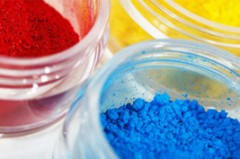Application
Where does most titanium dioxide come from?
Imagine a world without vibrant colors, where everything is dull and lifeless. From the brilliant blue skies to the lush greenery of nature, colors evoke emotions, spark creativity, and bring joy to our lives. Behind the scenes, a mighty titan known as titanium dioxide plays a pivotal role in creating these captivating hues.
Titanium dioxide, commonly referred to as TiO2, is a naturally occurring compound that possesses unique properties. It is renowned for its brilliant white color, high refractive index, and exceptional opacity. These characteristics make it an indispensable ingredient in a wide range of industries, including paints, coatings, plastics, cosmetics, and even food products.

To understand the source of titanium dioxide, we must delve deep into the Earth's crust, where the titan hides. Most of the world's titanium dioxide originates from mineral deposits such as rutile and ilmenite. These deposits are typically found in beach sands, coastal dunes, and even in the hard rock of ancient volcanic complexes.
The process of mining titanium dioxide begins with extracting the minerals from the earth. This involves a combination of open-pit mining, dredging, and heavy machinery. Once the mineral-rich sands are obtained, they undergo a series of intricate separation and purification techniques to isolate the precious titan within.
Now that we have captured the elusive titan, the next step is to transform it into the titanium dioxide. The manufacturing process involves a complex series of chemical reactions and refining steps.
Firstly, the extracted minerals are heated to remove impurities and moisture, leaving behind a pure titanium dioxide precursor known as synthetic rutile. This precursor then undergoes a specialized process called the chloride process, where it is transformed into titanium tetrachloride. From there, the titan embarks on a fascinating alchemical journey, encountering a blend of oxygen and heat, resulting in the creation of titanium dioxide particles.




